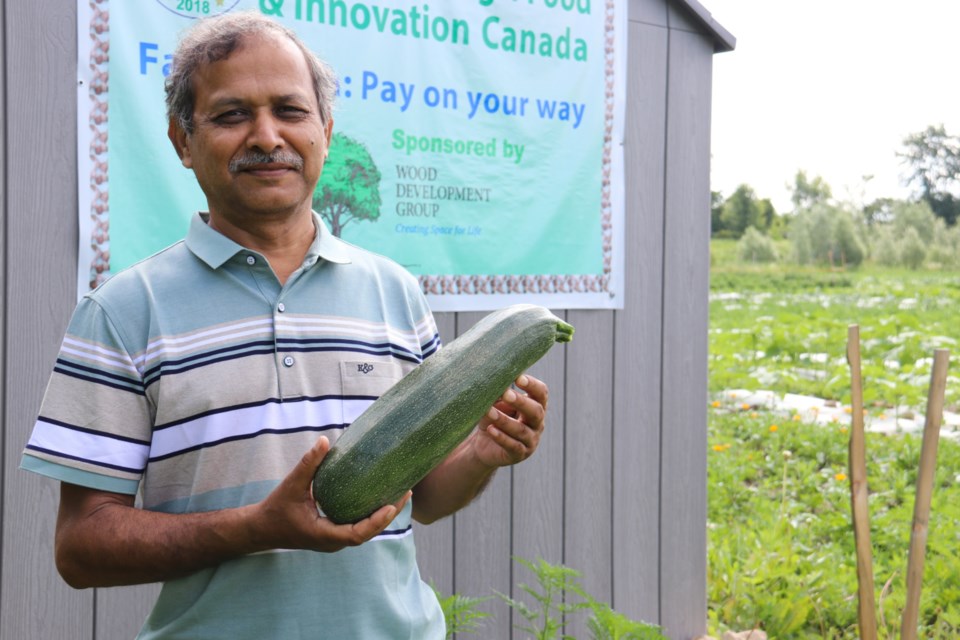A new program is being launched to help students, seniors and new immigrants access fresh produce at a price they can afford, while combating food waste along the way.
GreenTech AgriFood & Innovation Canada (GAIC) has launched FarmFresh: Pay on your way, a pay-what-you-can program serving community members who have limited or no access to fresh fruits and vegetables each week throughout the summer.
“Senior people, and then new immigrants and students, they don’t have access, or (have) limited access to fresh fruits and vegetables. So they can get those fruits and vegetables from here,” said GAIC CEO and University of Guelph professor Poritosh Roy, who started the program.
The lack of access to fresh produce could be due to a limited income and a lack of space to grow their own food. New immigrants are also not always familiar with the fruits and vegetables grown here, Roy said.
Maintained by Roy and his four part-timers and four volunteers, the produce is grown on a two-acre plot tucked in behind the housing complex at 187 Fife Rd.
The exact location, as well as what and how much is available each week will be posted on their Facebook page here. Boxes can be reserved by messaging him on the page once the produce is listed.
They grow produce like beans, melons, cucumber, Swiss chard, zucchini, and lots of squash. But they’re also growing foods that aren’t commonly grown in Canada and are hard to find, like okra and hyacinth beans.
Growing food for the community not only helps with food insecurity, but helps to combat food waste as well, Roy said.
“Why are we wasting so much food? Because we import lots of fruits and vegetables from foreign countries,” he said.
Since every fruit and vegetable has its own shelf life, if you’re importing from places like Mexico or India, half the shelf life is spent in transportation. That means by the time it hits grocery stores in Canada, the shelf life is pretty short.
“So if we can grow some of those vegetables in Canada, that means we’re providing a longer shelf life,” which means less waste.
For the first year at least, 50 per cent of the produce will be sold to buyers like the University of Guelph and the SEED, who in turn will sell the produce at affordable and sometimes sliding scale prices.
This is because Roy is paying for much of the work out of his own pocket; the goal is to make enough to pay staff with and have some money leftover for next year.
If the program is successful, he's hoping they can expand with a bigger plot next year to grow even more produce.
For the rest of the summer until the end of harvest season, Roy and his team will collect the produce at the end of each week. Boxes will be set out beside the Fife Road co-op every Saturday from 10 a.m. to 12 p.m. for community members to access on a pay-what-you-can basis.
There is no registration needed, as he doesn’t want people to feel pressured to provide their information – “they might feel shy,” he said.
Depending on how much produce they end up with and how many people come out, they might limit how much each person can take, but he said they’re going to see how it goes first.



